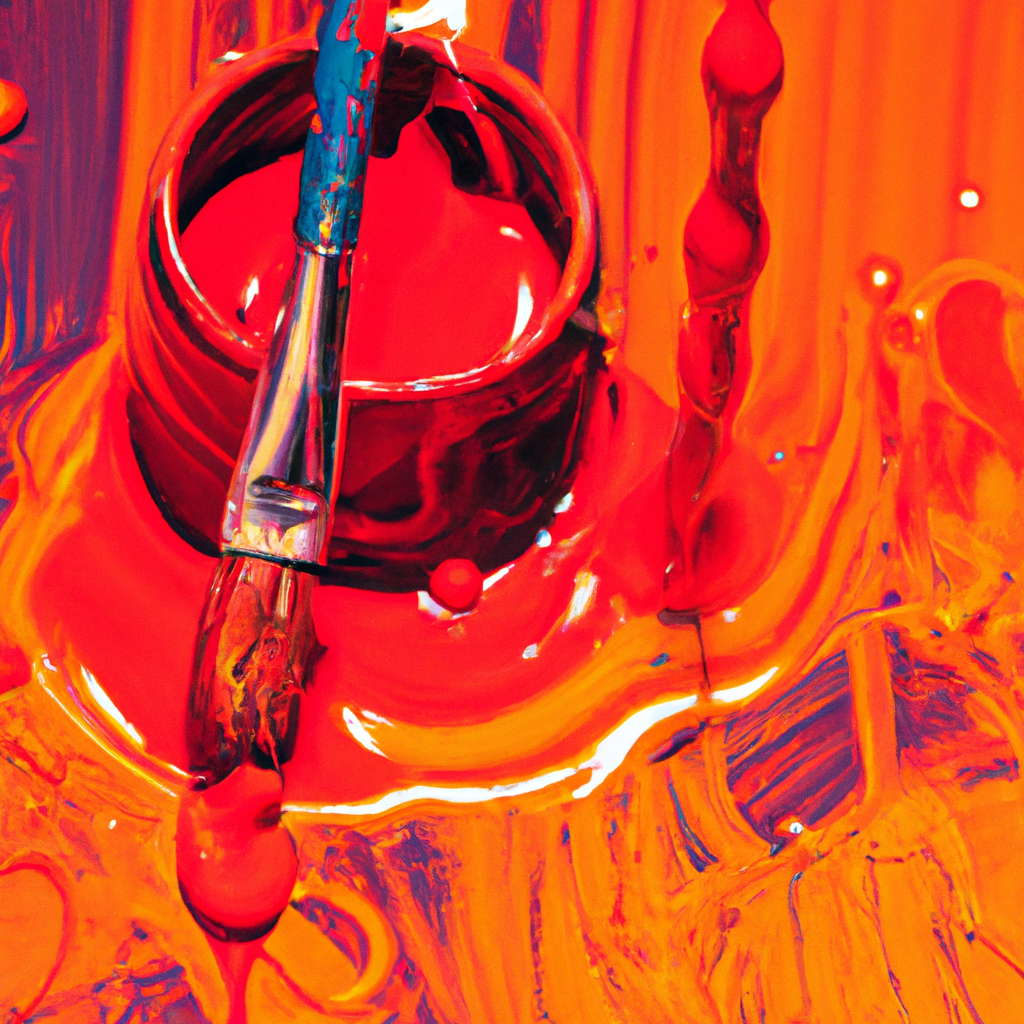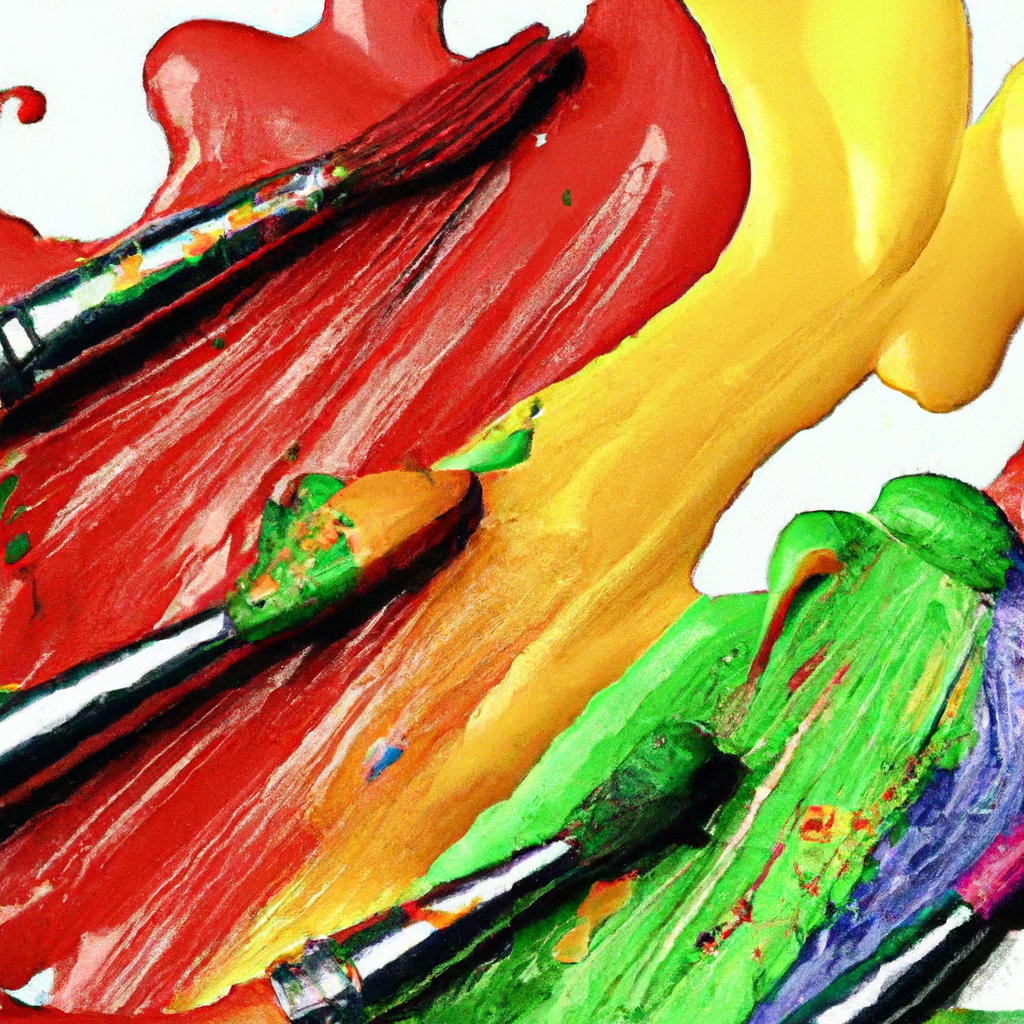Have you ever found yourself with a dried-up tube of acrylic paint? Don’t worry, you’re not alone. In this article, you will discover an easy and effective method to rehydrate your acrylic paint, allowing you to use it again and save some money in the process. Whether you’re an experienced artist or just starting out, knowing how to revive dried acrylic paint will surely come in handy. So, grab your old tubes of paint and let’s get started on breathing new life into them!
How to Rehydrate Acrylic Paint
Acrylic paint is a versatile medium used by artists of all skill levels. However, if you’ve ever left your acrylic paint sitting unused for an extended period of time, you may have encountered the frustrating problem of it drying out. Don’t worry, though! There are several methods you can use to rehydrate your acrylic paint and bring it back to life. In this article, we will explore why rehydrating acrylic paint is important, how to determine if your paint is dried out, precautions to take before rehydrating, various methods to rehydrate acrylic paint, pro tips for successful rehydration, and how to properly store and maintain your acrylic paint for future use.

This image is property of images.unsplash.com.
Why Rehydrate Acrylic Paint?
Before we delve into the process of rehydrating acrylic paint, let’s first understand why it’s important to do so. Acrylic paint can be quite expensive, and allowing it to dry out completely would result in wasted paint and money. By rehydrating the dried paint, you can extend the life of your acrylics and avoid unnecessary waste. Additionally, rehydrated paint will have a smoother consistency, making it easier to work with and achieve the desired effect on your canvas.
Understanding Acrylic Paint Drying Process
Acrylic paint dries through a process called evaporation, where the water within the paint evaporates, leaving behind a solid acrylic polymer film. The speed at which acrylic paint dries can vary depending on factors such as temperature, humidity, thickness of the paint layer, and the brand of paint used. Generally, acrylic paint dries within minutes to a few hours. However, if the paint is exposed to air or left uncapped for too long, it can dry out completely and become unusable.
Determining if Acrylic Paint is Dried Out
Before you attempt to rehydrate your acrylic paint, it’s crucial to determine whether it is actually dried out or simply thickened. Thickened paint can often be salvaged by adding water or an acrylic medium, while completely dried out paint requires a different rehydration method. To check if your paint is dried out, gently press a clean brush into the paint surface. If it forms a crust and doesn’t adhere to the brush, the paint is likely dried out. If it comes off the surface in clumps or chunks, it can still be rehydrated.
Precautions before Rehydrating Acrylic Paint
Before you proceed with rehydrating your acrylic paint, it’s important to take some precautions to ensure the best possible outcome. First, protect your work area by laying down a plastic sheet or using a palette that can easily be cleaned. This will prevent any mess or damage to your workspace. Next, gather the necessary materials for rehydration, which may include a spray bottle with water, acrylic medium, alternative liquids (as discussed later), and palette knives or spatulas for mixing. Additionally, ensure good ventilation in your work area to avoid inhaling any fumes that may be emitted during the rehydration process.

This image is property of images.unsplash.com.
Methods to Rehydrate Acrylic Paint
Now that you’ve taken the necessary precautions, let’s explore three tried-and-true methods to rehydrate your acrylic paint: using water, using acrylic medium, and using alternative liquids.
1. Using Water to Rehydrate Acrylic Paint
Using water is the simplest and most common method to rehydrate acrylic paint. Start by spraying a fine mist of water onto the surface of the paint, or you can moisten a brush with water and gently stir it into the dried paint. Gradually add water, mixing and breaking up the dried paint with a palette knife or spatula until it reaches your desired consistency. Be careful not to add too much water at once, as this can dilute the paint and affect its color intensity. Remember, it’s always easier to add more water than to remove excess water, so proceed slowly.
2. Using Acrylic Medium to Rehydrate Acrylic Paint
Another effective method to rehydrate acrylic paint is by using an acrylic medium, which is specifically designed to modify the properties of acrylic paint while maintaining its integrity. Acrylic mediums come in various forms, such as gel mediums, flow mediums, and retarders. To rehydrate dried paint using an acrylic medium, simply mix a small amount of the medium into the dried paint, gradually adding more until the desired consistency is achieved. The advantage of using an acrylic medium is that it not only rehydrates the paint but also enhances its characteristics, such as transparency, gloss, or flow.
3. Using Alternative Liquids to Rehydrate Acrylic Paint
If you don’t have access to water or acrylic medium, you can explore alternative liquids to rehydrate your acrylic paint. Some artists have had success using substances like glycerin, rubbing alcohol, or even commercially available paint-reviving products. However, it’s essential to exercise caution when using alternative liquids, as they may alter the properties and behavior of acrylic paint. Always test a small amount on a separate surface before applying it to your artwork, and be aware that some liquids may not be suitable for long-term rehydration or may affect the archival quality of your paint.
Pro Tips for Rehydrating Acrylic Paint
To ensure successful rehydration of your acrylic paint, here are some pro tips to keep in mind:
- Start with small amounts of water or medium and gradually add more until the desired consistency is achieved.
- Mix the rehydration liquid thoroughly into the paint using a palette knife or spatula, breaking up any clumps or chunks along the way.
- Consider using a spray bottle filled with water to evenly moisten the paint surface before mixing, especially if the paint is dried out in a tube.
- Avoid over-rehydrating the paint, as this can result in a watery consistency and lead to color dilution and weak paint film.
- If the rehydrated paint appears lumpy or uneven, strain it through a fine mesh sieve or nylon stocking to remove any clumps.
- Experiment with different rehydration methods and find the one that works best for you and your painting style.

This image is property of images.unsplash.com.
Storing and Maintaining Acrylic Paint for Future Use
Preventing acrylic paint from drying out in the first place is always preferable. To store and maintain your acrylic paint for future use, follow these tips:
- Keep your paint tubes tightly sealed when not in use to prevent unnecessary evaporation.
- Store your paint in a cool, dry place away from direct sunlight, as excessive heat and light can accelerate the drying process.
- Consider transferring your acrylic paint from tubes to airtight containers, such as jars or squeeze bottles, for better control over the amount of paint exposed to air.
- If you have leftover paint, cover the palette with a damp cloth or use a palette with a lid to keep the paint moist during breaks or overnight.
- Regularly inspect your acrylic paint stash for any signs of drying out or changes in consistency, and address the issue promptly to avoid wasting paint.
Conclusion
Rehydrating acrylic paint is a valuable skill every artist should possess. By understanding the drying process, determining if your paint is dried out, and following the appropriate methods, you can bring your dried up acrylic paint back to life and continue creating beautiful artworks. Remember to take precautions, experiment with different rehydration techniques, and store your acrylic paint properly to make the most out of your artistic journey. Happy painting!




